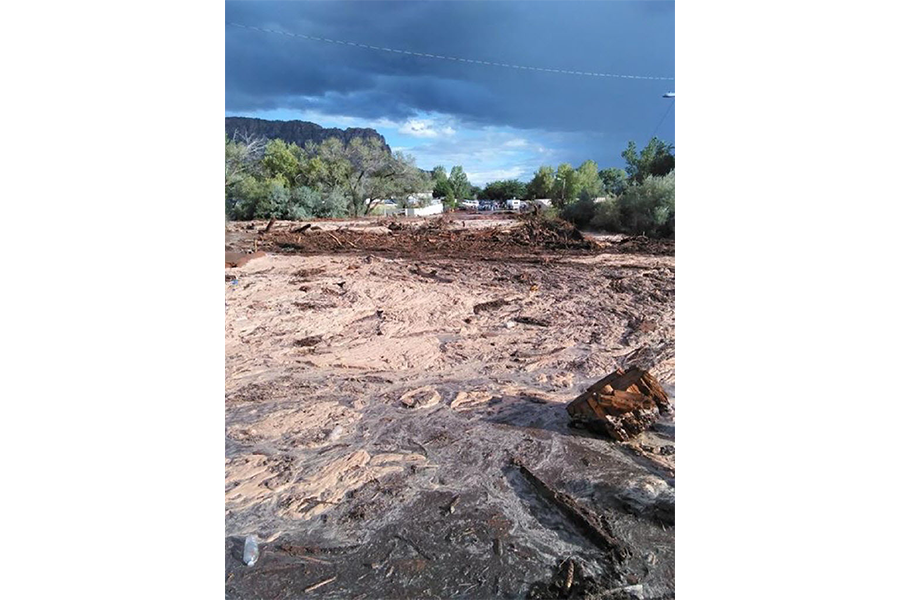Utah flash floods: How to survive when waters rise on the road
Loading...
A flash flood hit an Utah-Arizona border town Monday evening, leaving a trail of damage, according to authorities.
"The flooding caused extensive damage and several vehicles were washed downstream. In the flash flooding two occupied vehicles were hit by a large wall of water and debris at the Canyon Street Maxwell Crossing and were carried into the flood. There were 16 people with the vehicles who were washed downstream by the flooding," Utah Division of Emergency Management said in a Facebook post.
The flood "obviously caught these people off guard," Hildale assistant fire chief Kevin Barlow told The Associated Press. "Witnesses say they were backing out of it trying to get away from it and it still swept them in."
Eight people were killed and at least five people were reported missing. On Tuesday, emergency responders spent the morning trudging through area searching for the missing persons.
According to the National Oceanic and Atmospheric Administration, US floods kill more people each year than tornadoes, hurricanes or lightning.
When a heavy rains rolls in, flash floods can be a dangerous threat. So, how can one survive a deluge while on the road?
NOAA offers several recommendations for motorists:
- Don't drive if you don't have to. Get out of areas subject to flooding. This includes dips, low spots, canyons, washes, etc.
- Never try to walk, swim, drive, or play in flood water. You may not be able to see how fast the flood water is moving or see holes or submerged debris.
- Do not camp or park your vehicle along streams and washes, particularly during threatening conditions.
- Be especially cautious at night when it is harder to recognize flood dangers.
- Do not attempt to drive through a flooded road. The depth of water is not always obvious. The road bed may be washed out under the water, and you could be stranded or trapped.
- Do not drive around a barricade. Barricades are there for your protection. Turn around and go another way.
- If the vehicle stalls, leave it immediately and move to higher ground. Rapidly rising water may engulf the vehicle and its occupants, sweeping them away. Vehicles can be swept away by as little as two feet of water.
- If you come upon an area where water is above your ankles, stop! Turn around and go another way to higher ground. If it is moving swiftly, even water six inches deep can knock you off your feet. Many people are swept away wading through flood waters, resulting in injury or death.
- After the flood, do not visit disaster areas. Your presence might hamper rescue and other emergency operations.





